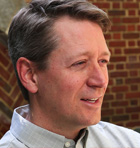
Witchcraft

Professor of Religious and American Studies Doug Winiarski currently teaches the course titled “Witchcraft in the Atlantic World.” In this class Winiarski and his students explores the global phenomenon of witch-hunting during the early modern world (1450-1850) including the infamous 1692 trials held in Salem Massachusetts.
“People everywhere have always believed in occult, or hidden, forces and entities that can’t be known through ordinary sensory data. These non-empirical realities—what early Anglo-American colonists called the “invisible world”—play a crucial role in helping individuals create meaning, especially in moments of acute stress.
Witchcraft is a special subset of this process. We often think of witchcraft as a form of scapegoating. As recent political events suggest, the discourse of the “witch hunt,” almost by definition, involves fraudulent motives. But that’s not really what witchcraft was about during the early modern period, the great era of witch-hunting in Europe and North America.
It’s more accurate to classify witchcraft as a system of knowledge, a set of beliefs about the invisible world that allowed ordinary people to identify and categorize the sources of their misfortunes and afflictions. Witchcraft dealt with crucial issues of life and death, health and illness, and survival in an uncertain world: why children and livestock sickened and died, to be sure, but also why yeast failed to rise and beer spoiled in the fermenting process. The many ways in which people engaged the invisible world—tapped its power, shielded themselves from its harm—is the subject of my courses on ‘Occult America’ and ‘Witchcraft in the Atlantic World.’”
Contact Sunni Brown, director of media and public relations, at sbrown5@richmond.edu to connect with Doug.
